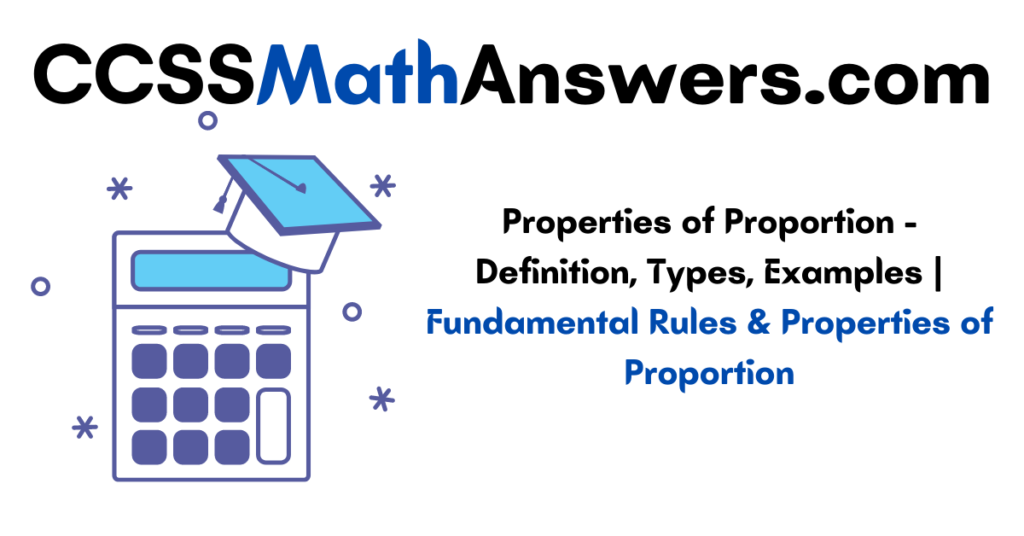Basically, when we solve the proportion some properties make our calculations easy and simple. To help you in this we have listed some of the properties such as invertendo, Addendo introduction, with a few solved example problems that are mainly useful to the 6th Grade Math students. Make the most out of the Proportion Properties available here and make your computations quick.
Properties of Proportion
In our real-life scenarios, we faced the cases in terms of measurements for comparing the quantities. So, it is important to know about the various properties which are shown below.
1). Proportion is nothing but the equality of two ratios
Four Quantities v, x, y, and z are in Proportion when v : x = y : z which is also written as v / x = y / z
2). Four Quantities v, x, y, and z are called terms of Proportion where the First and fourth terms are known as Extreme Terms whereas the second and third were known as Mean Terms.
3). Product of Extreme Terms is Equal to the Product of Mean terms
When v : x = y : z in Proportion , vz = xy .It is nothing but the Cross Multiplication Rule.
4). Suppose Three quantities v, x, y of a similar type are considered in continuous proportion. Then write the proportion Equation as shown below.
v : x = x : y
By employing the Cross product rule it gives the Result as x 2 = vy
5). When the three terms v, x, y are in continuous proportion, then the central term x is known as mean proportional.
x 2 = vy
√bc
6). Invertendo : It is a property of proportions when v : x = y : z, which implies x : v = z : y
7). Alternendo: It is a property where second and third terms are exchanged. when a : b = c : d, then a : c = b : d
Also, Refer:
Properties of Proportion Examples
Question 1:
Does the numbers 7,4,6,5 in proportion?
Solution :
Given 7,4,6 and 5 are the four numbers.
By applying the cross multiplication rule for the given numbers, we get the result as shown below
7 x 5 = 4 x 6
35 = 24
From the above result, we can conclude that the product of Extreme terms is not equal to the Product of mean terms. Hence the given numbers are not in proportion.
Question 2:
Does the numbers 12, 14, and 3 are in continued proportion?
Solution :
Here 12, 14, and 3 are the three given numbers. According to the Definition, when the three numbers v, x, y are in proportion, then v, x, and x y are in proportion.
i.e. 12 , 14 and 3 in proportion, then 12, 14,14 and 3 in proportion.
product of Extreme terms 12 x 3 = 36 and the product of Mean terms 1 4 x 14 = 196
since both the terms are not equal, given numbers are not in Continued Proportion
Question 3:
Given 7,4, 3, y is the four terms of proportion. then what is the value of y?
Solution:
Given four numbers 7, 4, 3,y Then cross multiply it as shown below.
7 x y = 4 x 3
7y = 12
y = 1.7
FAQs on Properties of Proportion
1). What is a Proportion?
Proportion is a concept where the two ratios are identical or similar.
2). What are the various properties of proportions present?
v / x = y / z, v 2 =xy, vz = xy, Invertendo and Alternendo.
3). What is the property employed for evaluating the proportions?
The Cross multiplication property is utilized in the case of proportions.
4). How to tell that the given numbers are in proportion?
Simply write infractions and minimize the given numbers and when they are similar by cross multiplying it is said to be in proportion.
